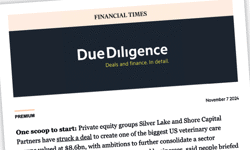
Paper prices are rising in January 2017 due to the poor returns by continental mills. Not great news for magazine publishers, but generally, experienced publishers have always considered tweaking their paper purchasing based on how well their publications are faring, but also in response to rising costs. Although paper increases might be a rarity, it is unlikely to be exactly welcomed. However, it can perhaps act as a prompt - to take stock of paper options and determine if there is a more effective solution.
Whilst there has been a significant decline in the number of paper mills since the beginning of the millennium, publishers still have an array of options to consider for text papers, from newsprint and calendared uncoated papers (36-55gsm) through lightweight coated (48-90gsm), medium weight coated (65-100gsm) to triple coated woodfree papers in 90gsm and above – and cover papers from 100-400gsm.
In addition, with the trend shifting away from gloss to silk, to matt and then uncoated, this has gifted publishers the chance to use bulkier papers which provide an opportunity to drop 5 or 10gsm and possibly even paper type, saving money. Timed accordingly, this can neatly fit in with a redesign and help the title to paddle into calmer waters. This process has been ably assisted by a number of magazine paper manufacturers producing niche products or grammages helping to serve up a cost saving wave.
Thinking paper-first helps take control of variable costs - from reconsidering format size to maximising layout on the printing press, to distribution efficiencies through size and weight. Publishers both large and small don’t have to employ an expert; they can utilise a specialist magazine paper merchant to determine the options and manage all their paper requirements.
Taking control of paper gives the publisher the additional opportunity to determine the environmental credentials of the paper. Whether it's insisting on a recycled sheet, or chain of custody for the fibres used, through to carbon offsetting or balancing the carbon emissions associated with production, these options can all be put in place with the minimum of fuss. This will be increasingly important to publishers keen to identify with their readers’ aspirations and, as importantly, with their advertisers.
Key factors that publishers will need to consider:
• Coated, uncoated,
• Recycled or virgin
• Part mechanical or chemically produced wood pulp (woodfree)
• Grammage
• Caliper (this varies from one paper to another)
• Opacity (transparency)
• Chain of custody
• Carbon offsetting
It is possible to surf the offline waves, even when it gets choppy, to get the best cost-effective paper solution.










